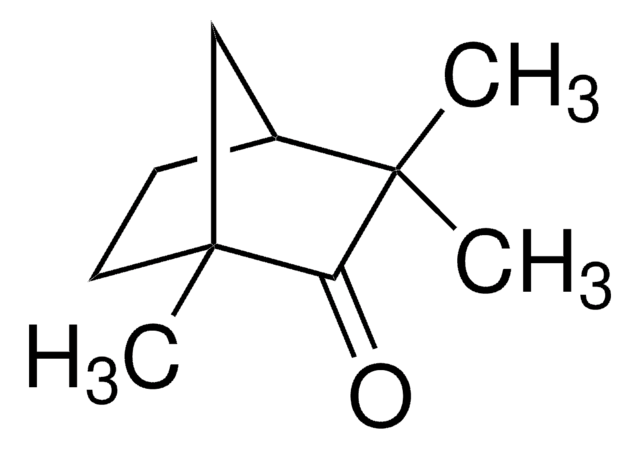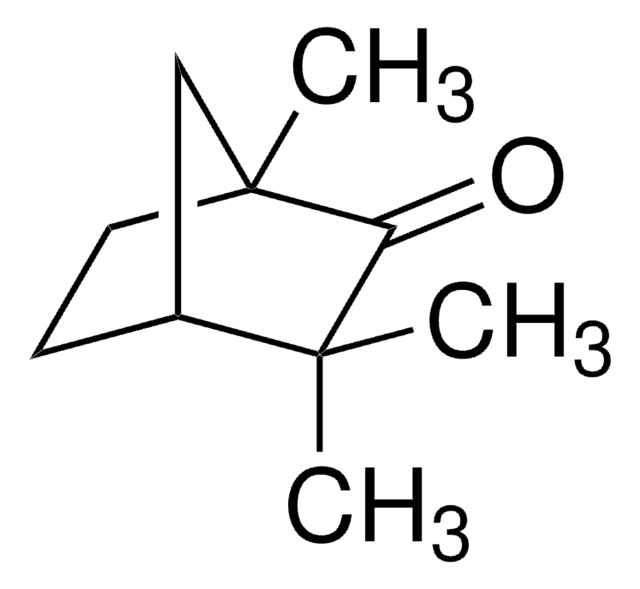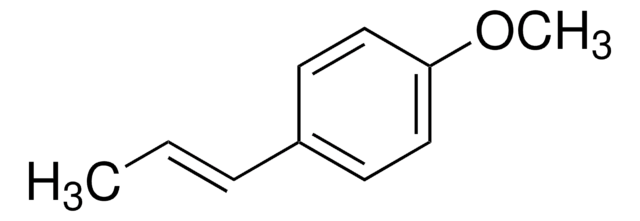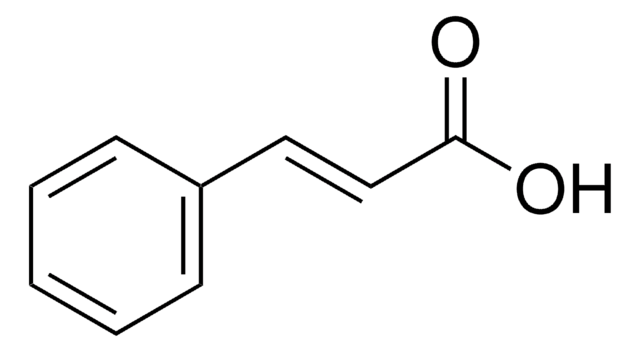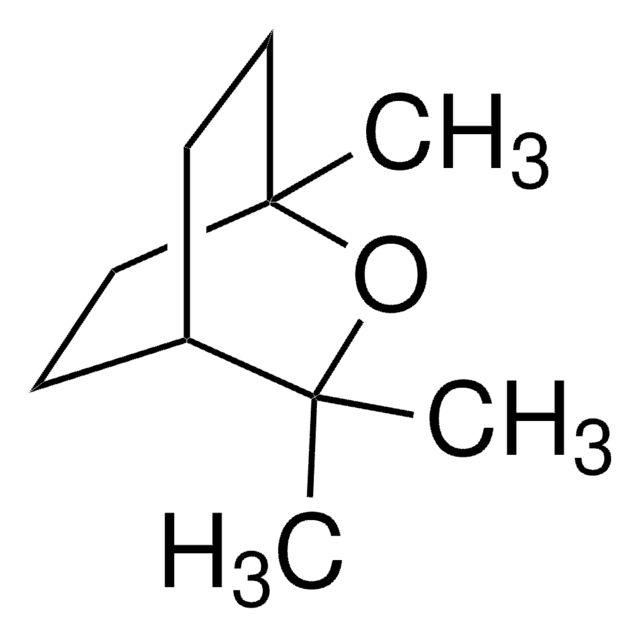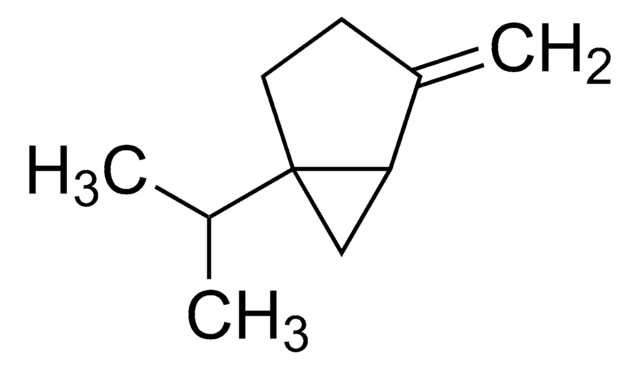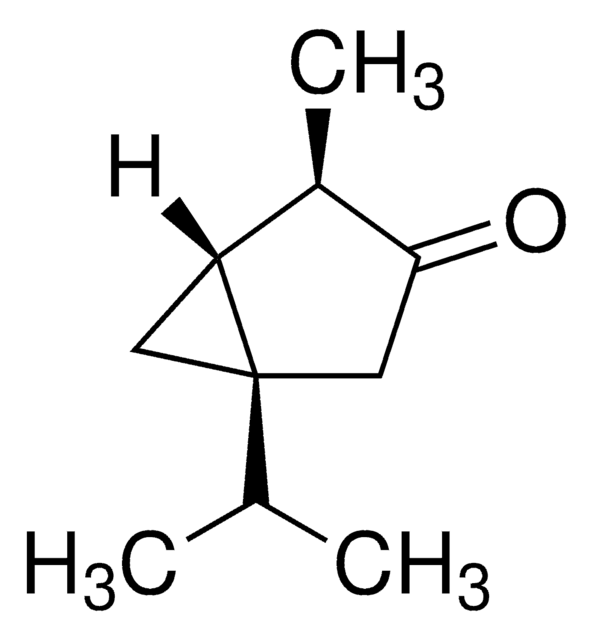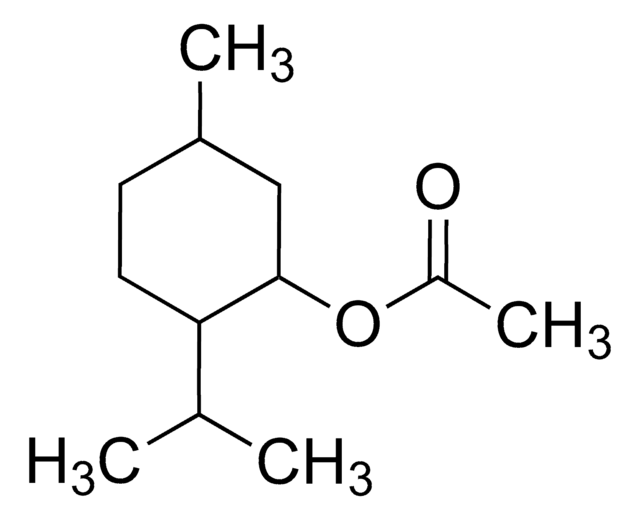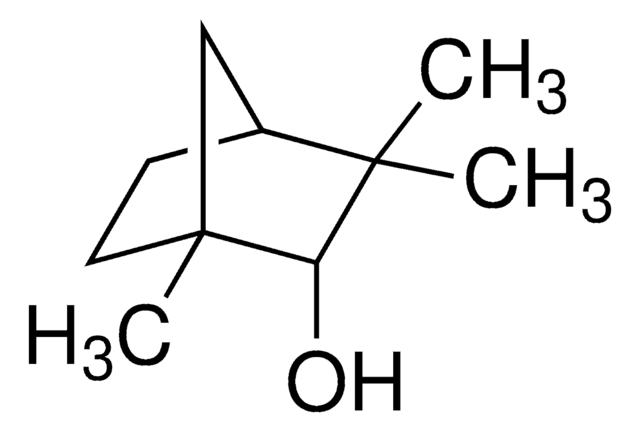Kluczowe dokumenty
W507709
L-Fenchone
≥98%
Synonim(y):
(1R)-(−)-Fenchone, (−)-1,3,3-Trimethyl-2-norbornanone, (−)-Fenchone, (1R)-1,3,3-Trimethylbicyclo[2.2.1]heptan-2-one
About This Item
meets purity specifications of JECFA
Polecane produkty
pochodzenie biologiczne
synthetic
Poziom jakości
klasa czystości
Fragrance grade
Halal
Kosher
agency
follows IFRA guidelines
meets purity specifications of JECFA
zgodność regionalna
EU Regulation 1223/2009
Próba
≥98%
aktywność optyczna
[α]20/D −51°, neat
współczynnik refrakcji
n20/D 1.461 (lit.)
bp
192-194 °C (lit.)
mp
5-6 °C (lit.)
gęstość
0.948 g/mL at 25 °C (lit.)
Zastosowanie
flavors and fragrances
Dokumentacja
see Safety & Documentation for available documents
alergen pokarmowy
no known allergens
alergen zapachowy
no known allergens
Organoleptyczne
camphoraceous; earthy; woody
ciąg SMILES
CC1(C)C2CCC(C)(C2)C1=O
InChI
1S/C10H16O/c1-9(2)7-4-5-10(3,6-7)8(9)11/h7H,4-6H2,1-3H3/t7-,10+/m0/s1
Klucz InChI
LHXDLQBQYFFVNW-OIBJUYFYSA-N
Szukasz podobnych produktów? Odwiedź Przewodnik dotyczący porównywania produktów
Powiązane kategorie
Opis ogólny
Oświadczenie o zrzeczeniu się odpowiedzialności
Zwroty wskazujące rodzaj zagrożenia
Zwroty wskazujące środki ostrożności
Klasyfikacja zagrożeń
Aquatic Chronic 2
Kod klasy składowania
10 - Combustible liquids
Klasa zagrożenia wodnego (WGK)
WGK 2
Temperatura zapłonu (°F)
151.7 °F - closed cup
Temperatura zapłonu (°C)
66.5 °C - closed cup
Środki ochrony indywidualnej
Eyeshields, Faceshields, Gloves, type ABEK (EN14387) respirator filter
Wybierz jedną z najnowszych wersji:
Masz już ten produkt?
Dokumenty związane z niedawno zakupionymi produktami zostały zamieszczone w Bibliotece dokumentów.
Klienci oglądali również te produkty
Nasz zespół naukowców ma doświadczenie we wszystkich obszarach badań, w tym w naukach przyrodniczych, materiałoznawstwie, syntezie chemicznej, chromatografii, analityce i wielu innych dziedzinach.
Skontaktuj się z zespołem ds. pomocy technicznej